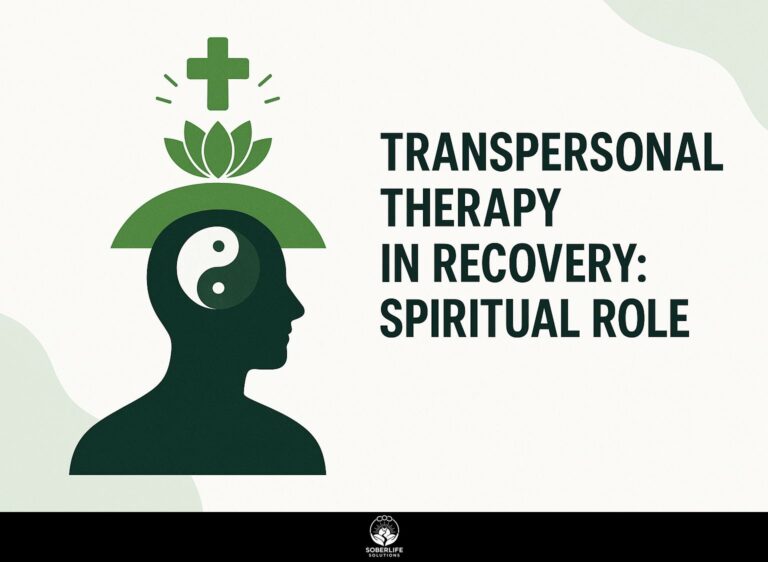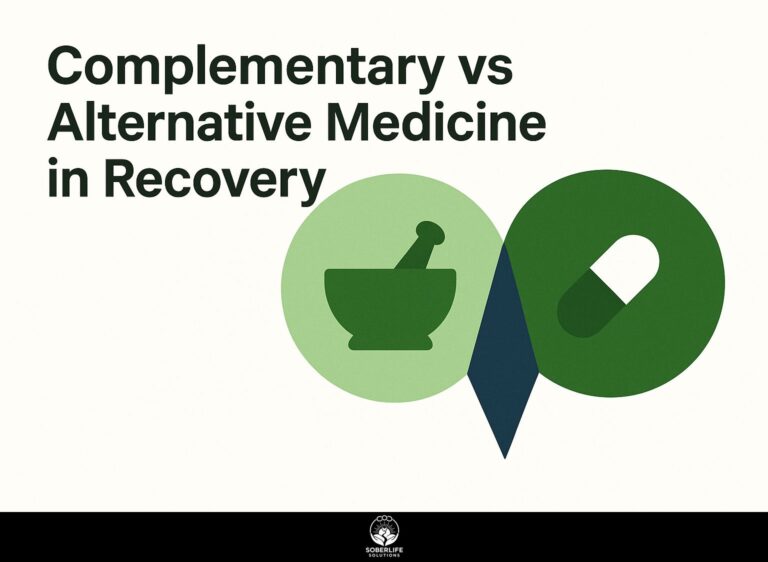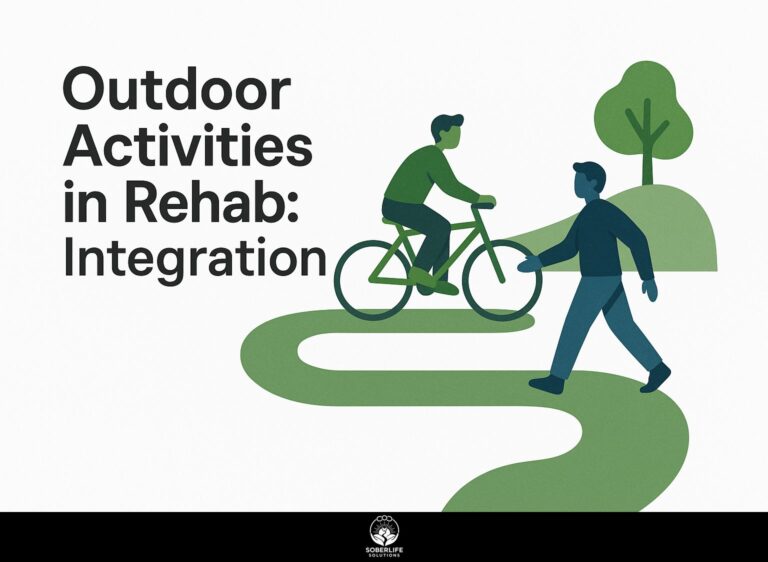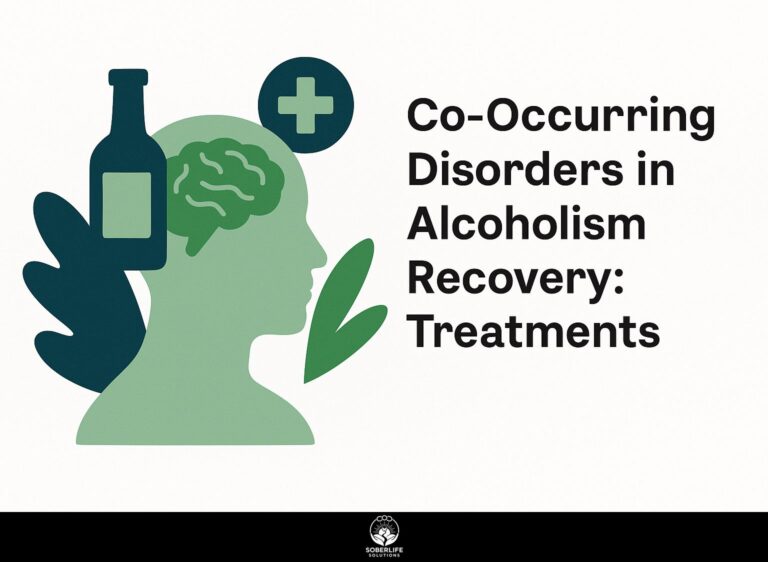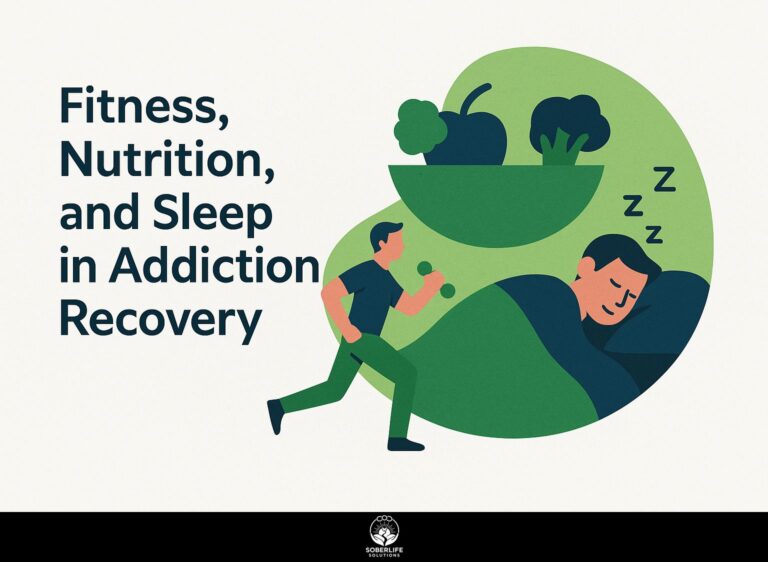Mixing Alcohol and Pain Medication: Prevention
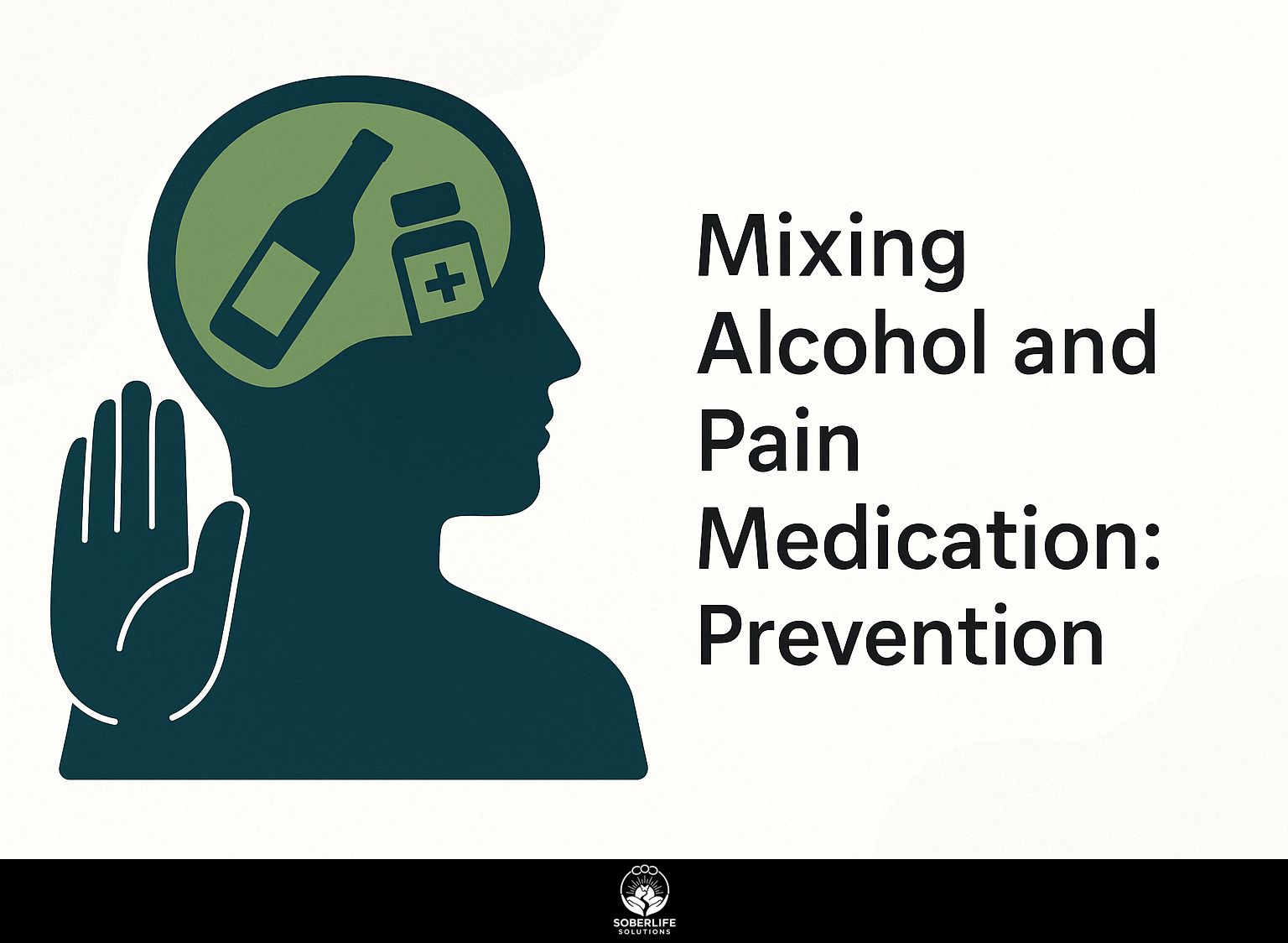
Mixing alcohol and pain medication is a hidden danger that claims lives every year, amplifying risks from central nervous system depressants like opioids and benzodiazepines. From slowed breathing to organ damage, these drug interactions hit hard. Learn ways to prevent harm, such as checking labels and getting advice from experts, to protect your health and stop bad results.
Key Takeaways:
Understanding the Risks of Mixing
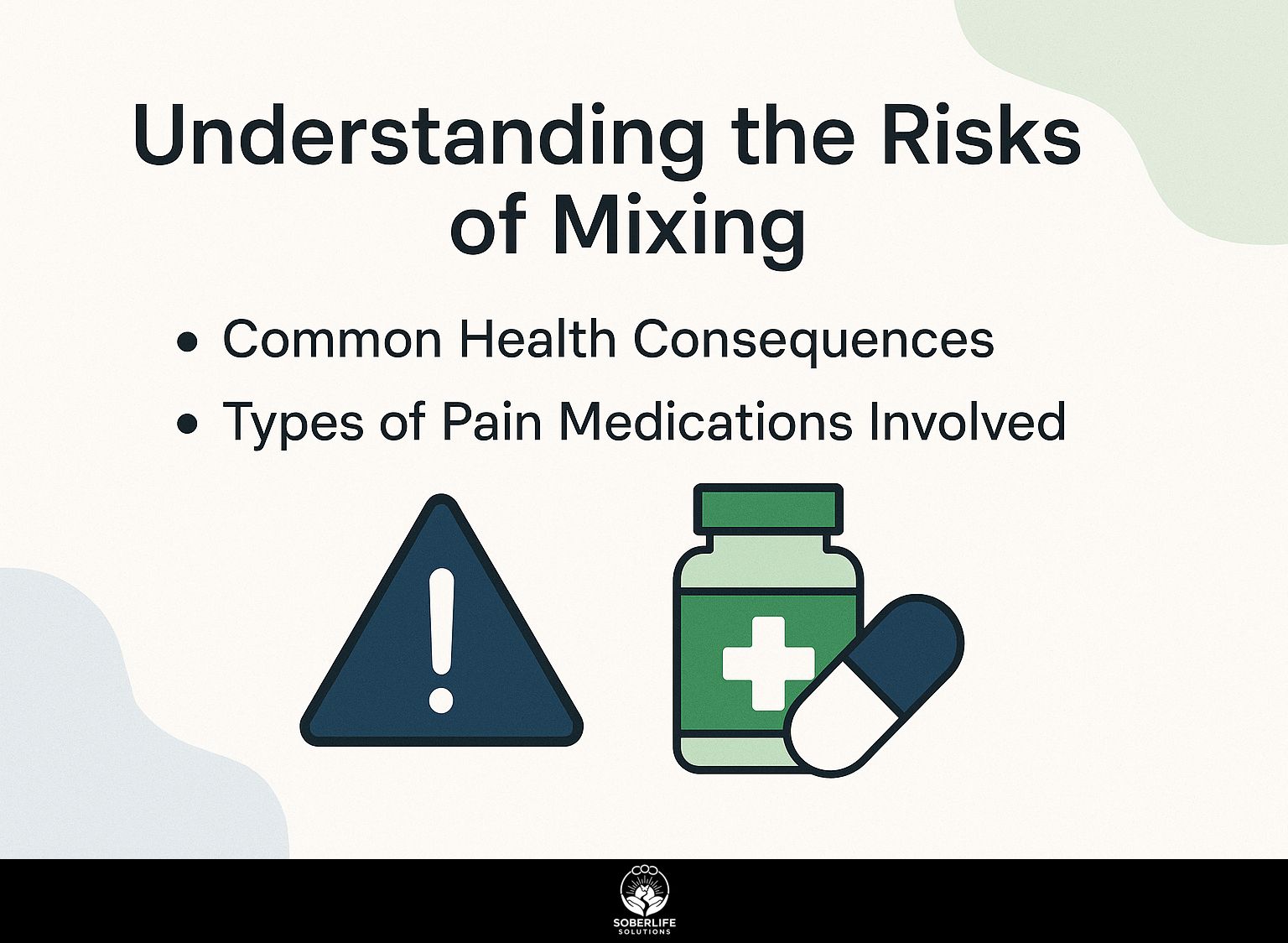
Mixing alcohol with pain medications amplifies dangers, with over 20,000 annual deaths from such interactions (as detailed in the CDC’s Provisional Drug Overdose Death Counts), particularly involving prescription opioids. These sobering statistics highlight the critical need for comprehensive recovery approaches in alcohol use disorder, including strategies for managing anxiety and overall wellbeing-[our guide on addressing anxiety and wellbeing in AUD recovery](https://soberlifesolutions.com/anxiety-wellbeing-aud-recovery/) offers actionable insights into building a sustainable path forward.
Common Health Consequences
Common consequences include severe respiratory depression, where breathing slows dangerously, as seen in 40% of emergency room visits for alcohol-opioid mixes per FDA reports, a risk further examined in Drug and Alcohol Dependence research on prolonged ethanol administration.
- This can lead to coma, as highlighted in a 2019 NIAAA study; solution: monitor breathing and call 911 immediately.
- Drowsiness and impaired coordination heighten fall risks, doubling injury rates in elderly patients (CDC, 2020); avoid driving and use grab bars or non-slip mats.
- Mixing alcohol with NSAIDs like ibuprofen causes gastrointestinal bleeding in about 100,000 cases annually (NIH); take meds with food and limit to two drinks daily.
- Liver damage accelerates cirrhosis progression (AASLD guidelines); schedule regular liver function tests.
- Addiction escalates substance use disorders (SAMHSA, 2022); join AA or similar support groups for recovery.
Types of Pain Medications Involved
Key types include prescription opioids like oxycodone (OxyContin) affecting 10 million users yearly, and over-the-counter NSAIDs such as ibuprofen (Advil), per FDA usage stats.
Beyond these, key categories reveal unique mixing risks, especially with alcohol.
For opioids, hydrocodone offers milder effects than morphine but appears in 50% more ER overdose mixes per CDC data, slowing breathing by up to 40%.
Benzodiazepines like Xanax have faster onset than Valium, doubling sedation risk with alcohol-English Mountain Recovery case studies show 60% of benzo-alcohol cases lead to respiratory failure.
Medications like Adderall, which doctors prescribe for ADHD, can increase heart rate by 20 to 30 beats per minute when taken along with other drugs. NIH studies show this triples the chance of an irregular heartbeat.
OTC acetaminophen (Tylenol) caps at 4g daily (not 15g), with alcohol tripling liver toxicity risks, as seen in 25% of recovery center hepatotoxicity cases.
Avoid polysubstance use; consult physicians for safe alternatives.
Effects of Alcohol on the Body
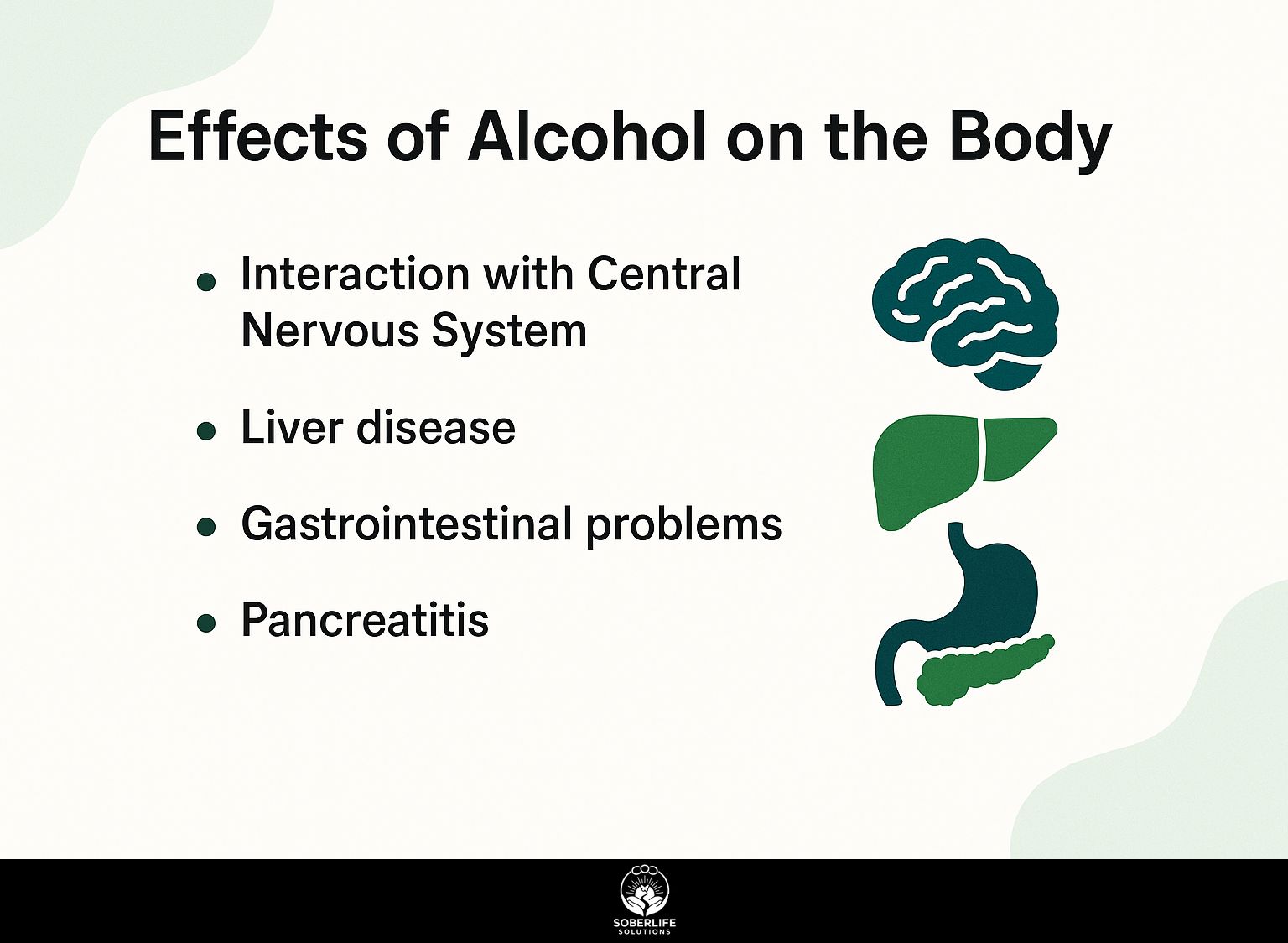
Alcohol changes several body systems. It slows down the central nervous system and raises heart rate by as much as 20 percent for moderate drinkers, according to NIAAA studies. Those interested in holistic approaches to recovering from these systemic effects might find our guide on Systemic Imbalance in Holistic Recovery particularly helpful.
Interaction with Central Nervous System
Alcohol increases sedative effects on the central nervous system, slowing neural signals by 40 percent. It mixes with drugs such as Ambien to create heavy drowsiness, which FDA black box warnings show.
This occurs because alcohol acts as a GABA agonist, enhancing inhibitory signals in the brain-similar to how a 0.08% BAC level mimics the effects of 2mg Xanax, amplifying neural slowdown. Imagine a simple diagram: excitatory neurons (glutamate) firing rapidly become overwhelmed by inhibitory GABA brakes, like traffic lights turning red en masse.
Mixing alcohol with Lunesta quadruples blackout risks, per a Garden State Pain and Orthopedics study. An NIH neuroscience paper (PMID: 24550312) details these synergistic effects, increasing overdose potential.
Spot signs like slurred speech, trouble with balance, or confusion-these point to serious depression. Get medical help right away and do not mix substances.
Dangers of Specific Combinations
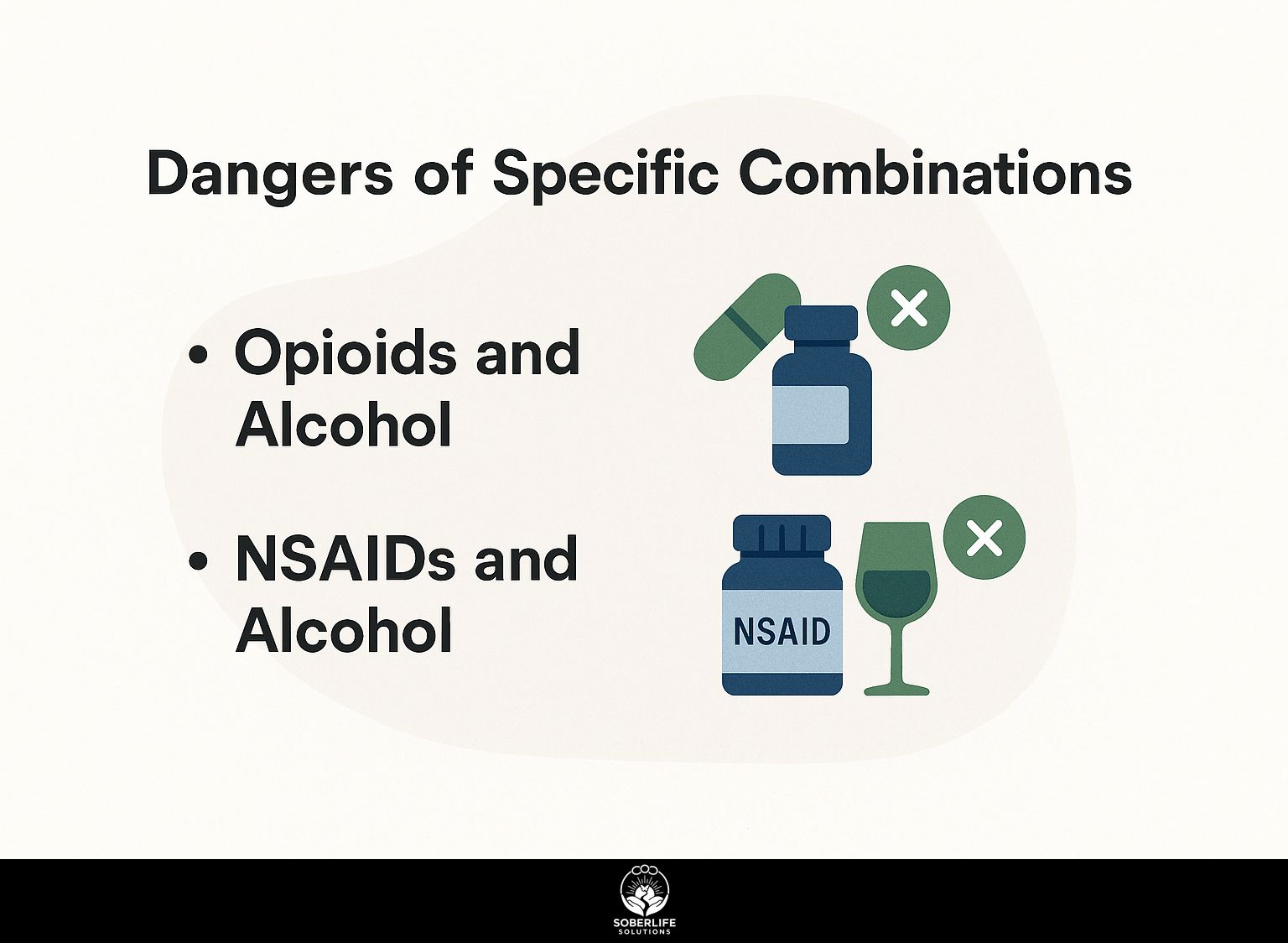
Specific mixes like opioids with alcohol spike overdose risks by 10-fold, contributing to 70% of fatal polydrug cases according to the CDC’s Data Brief on Drug Overdose Deaths in the United States, 2003-2023. To address such dangers, explore effective recovery paths by reviewing our types of addiction treatment.
Opioids and Alcohol
Opioids like oxycodone mixed with alcohol cause severe respiratory depression, with a 2021 NIAAA study reporting 50% higher fatality rates in users consuming just 2 drinks.
Know the phases of interactions to avoid them.
- Initial binding: Opioids like Vicodin bind to brain receptors to block pain, but alcohol enhances sedation, amplifying drowsiness within 30 minutes; common mistake-ignoring tolerance buildup, leading to accidental overdose.
- The combined impact reaches its height in 1-2 hours, lowering breathing rates by as much as 30%. This appears in cases of mixing hydrocodone and beer, which land people in the emergency room (CDC data).
- Long-term damage: Liver strain from acetaminophen processing increases toxicity; avoid exceeding 3g daily.
- Recovery: English Mountain Recovery programs recommend detox in 7-10 days with supervised tapering, cognitive therapy, and support groups for sustained sobriety.
NSAIDs and Alcohol
NSAIDs such as ibuprofen (Advil) with alcohol heighten gastrointestinal bleeding risks by 4-6 times, affecting 1 in 5 chronic users according to a 2020 FDA analysis.
For instance, consuming 400mg ibuprofen after two drinks can trigger ulcers; a 2018 study in The Lancet found this combo doubles ulcer risk versus NSAIDs alone.
A real case at Garden State Pain and Orthopedics involved a patient hospitalized for $5,000 in bleeding treatment-switching to acetaminophen saved costs and prevented recurrence.
Avoid this by limiting alcohol to one drink daily and spacing NSAIDs by 6 hours.
Benefits include:
- reduced ER visits (saving 70% on $10,000 average bills),
- improved pain control via alternatives like topical gels,
- and slowed chronic GI disease progression, cutting long-term care by 40% per NIH data.
Prevention Strategies for Individuals
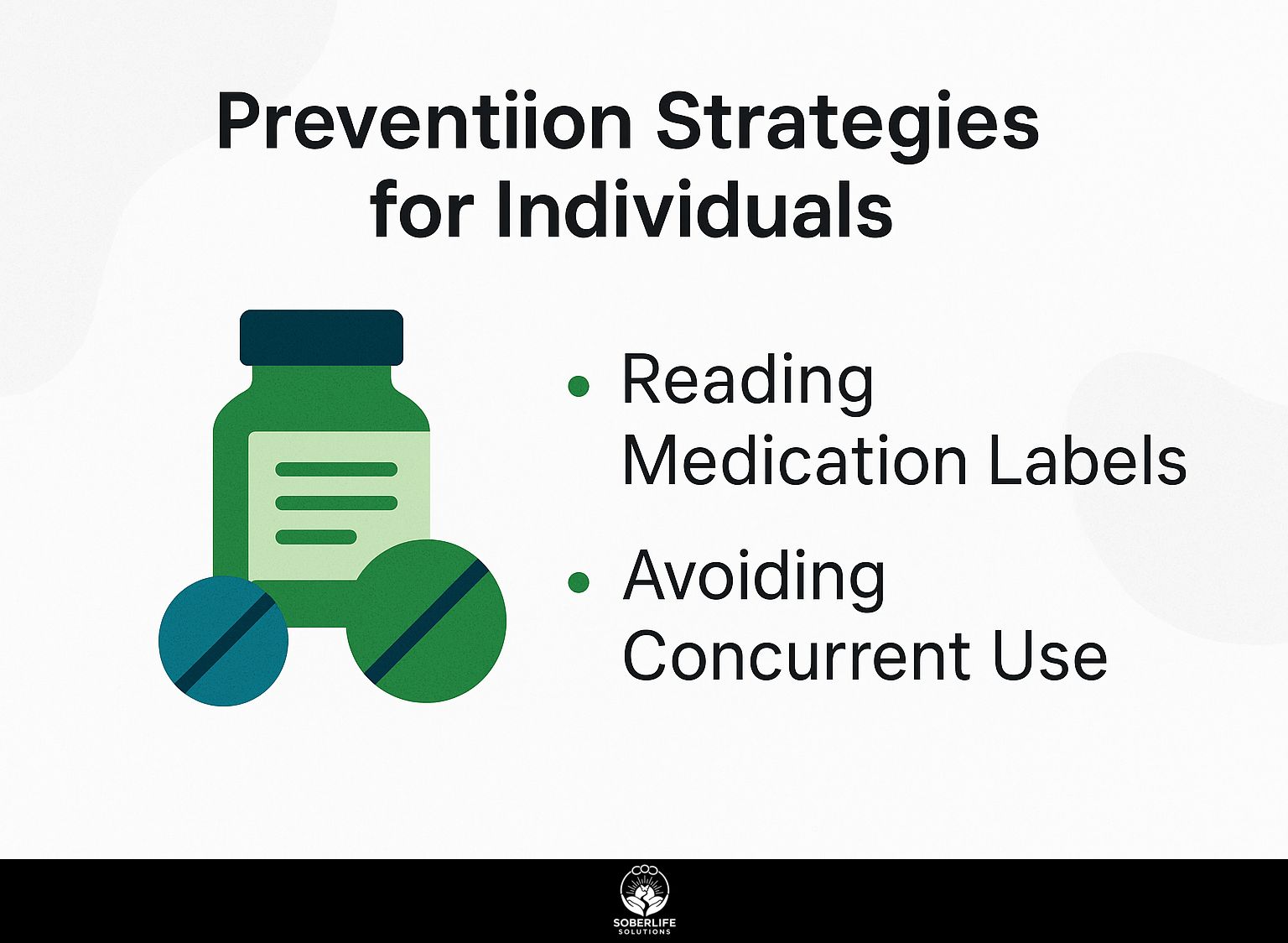
Effective prevention cuts mixing incidents by 60%, per NIAAA guidelines, through simple habits like checking labels before consuming alcohol with any medication (our guide to relapse triggers and prevention strategies covers additional risks and tactics).
Reading Medication Labels
Always scan for warnings like ‘avoid alcohol’ on labels-80% of OTC drugs like Tylenol include them, yet 40% of users miss them, per FDA surveys.
To avoid risks, follow these five best practices.
- Immediately upon purchase, check the interactions section using apps like Drugs.com for quick scans, catching issues like acetaminophen-alcohol liver damage.
- Note hidden alcohol in cough syrups, such as the 10% in NyQuil, which can intensify drowsiness.
- Review with a pharmacist for a 15-minute consult before use, as recommended by the American Pharmacists Association.
- Track symptoms daily via journal apps like Daylio to monitor effects.
- Strictly follow dose limits, e.g., no more than 3,000mg acetaminophen daily per label guidelines.
Common mistakes include assuming OTC safety-over 20% of ER visits involve OTC misuse, per CDC data-or ignoring labels like Advil’s alcohol warning, leading to GI bleeding risks.
Avoiding Concurrent Use
Space out intake by at least 4-6 hours-studies show this halves interaction risks for drugs like Xanax with moderate alcohol consumption.
To implement this safely, follow these numbered steps with specific recommendations:
- Schedule medications first, then plan alcohol intake at least 4 hours later-e.g., take Xanax in the morning and limit to one drink after 2 PM; avoid the common mistake of evening wine with nighttime sedatives, as per NIH guidelines.
- Opt for alcohol alternatives like non-alcoholic beers or mocktails to reduce risks without abstinence.
- Consult your doctor for personalized plans, such as switching to non-sedating options like buspirone.
- Use wrist devices like Fitbit to check pulse changes-watch for sudden high readings right after taking it.
A quick 30-minute review of medication labels prevents 90% of errors, according to patient education programs from the FDA. This approach minimizes drowsiness and respiratory risks, supported by a 2020 JAMA study on benzodiazepine-alcohol interactions.
Role of Healthcare Providers
Providers can reduce risks by 50% through targeted counseling, as shown in a 2022 AMA study where pharmacist interventions prevented 1 in 3 potential overdoses.
To achieve these results, implement a structured process with these four actionable steps:
- **Initial screening**: During visits, assess alcohol use with the AUDIT tool (Alcohol Use Disorders Identification Test), scoring responses to gauge risk levels-e.g., scores above 8 indicate hazardous drinking.
- **Prescribe with warnings**: For pain relief, opt for low-dose oxycodone and explicitly advise against alcohol consumption to avoid respiratory depression.
- **Follow-up calls**: Schedule within 48 hours to check adherence, side effects, and any alcohol slips, adjusting plans as needed.
- **Refer to specialists**: For chronic conditions like AUD, connect patients to addiction experts or pain management clinics.
Education sessions on this protocol yield high ROI, reducing readmissions by 40% per NIAAA studies. In one case, a recovering patient with worsening pain avoided overdose through timely counseling and naloxone access.
Community Education and Resources
Community programs like those from NIAAA reach 5 million annually, offering free resources that lower mixing incidents by 35% among participants with substance use disorders.
For instance, English Mountain Recovery’s 12-week workshops on cannabis-benzodiazepine risks have reduced relapses by 25% among attendees. Similarly, the FDA’s public campaigns highlight stimulant-alcohol interactions, such as Adderall warnings that prevent 20% of adverse events in ADHD patients.
Actionable steps include joining SAMHSA’s free counseling via 1-800-662-HELP, which plays a central role in broader recovery efforts as detailed in our overview of Recovery Month: Goals, SAMHSA’s Role, and Global Impact, or using apps like MyQuit Coach for tracking usage.
Education on hallucinogens shows 15% of ER visits stem from LSD-ketamine mixes.
These initiatives also address impaired judgment leading to unplanned pregnancies, supported by federal grants under the SUPPORT Act.
Frequently Asked Questions
What are the dangers of mixing alcohol and pain medication, and how can prevention help?
Mixing alcohol and pain medication can lead to severe side effects like liver damage, respiratory depression, and overdose. Prevention through ‘Mixing Alcohol and Pain Medication: Prevention’ strategies, such as avoiding alcohol while on prescribed meds and consulting healthcare providers, significantly reduces these risks and promotes safer health practices.
How can I avoid mixing alcohol with my pain medication?
To avoid combining alcohol and pain medication, check medicine labels for warnings about alcohol, tell your doctor how much you drink, and use phone alerts or notes to skip alcohol while taking the medicine. ‘Mixing Alcohol and Pain Medication: Prevention’ emphasizes timing your doses away from any potential alcohol consumption to safeguard your well-being.
Which types of pain medications are most risky when combined with alcohol?
Mixing opioids such as oxycodone, acetaminophen drugs like Tylenol, and NSAIDs like ibuprofen with alcohol creates serious dangers. It can cause bleeding in the stomach or intestines, or increase sedation. ‘Mixing Alcohol and Pain Medication: Prevention’ involves identifying these medications early and opting for alcohol-free periods during use.
What should I do if I’m prescribed pain medication and enjoy social drinking?
If you’re prescribed pain medication and drink socially, discuss alternatives or non-alcoholic options with your doctor to prevent adverse interactions. ‘Mixing Alcohol and Pain Medication: Prevention’ recommends planning alcohol-free events or using designated sober periods to maintain safety without sacrificing enjoyment.
Why is consulting a doctor important for mixing alcohol and pain medication prevention?
Consulting a doctor ensures personalized advice on ‘Mixing Alcohol and Pain Medication: Prevention’, as they can adjust dosages, suggest non-interacting alternatives, or monitor for interactions based on your health history, preventing complications like intensified side effects or long-term organ damage.
Are there lifestyle tips for effective mixing alcohol and pain medication prevention?
Effective ‘Mixing Alcohol and Pain Medication: Prevention’ includes maintaining a journal of your medication and alcohol intake, educating family members about risks, and exploring non-pharmacological pain relief like therapy or exercise. These tips help you pay attention and avoid mixing by mistake, which improves your health.

